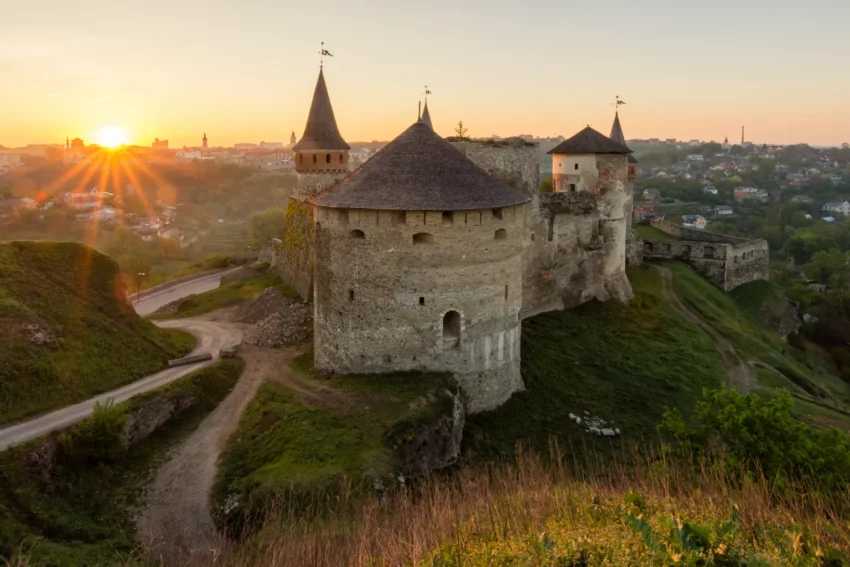Kamianets-Podilskyi Castle: A Fortress of History and Legend
Kamianets-Podilskyi Castle, known in Ukrainian as Кам’янець-Подільська фортеця, stands as a majestic symbol of Ukraine’s rich medieval heritage. Located in the historic city of Kamianets-Podilskyi, in the region of Podolia, this fortress has witnessed countless historical events and has been a crucial part of various empires.
Get your dose of History via Email
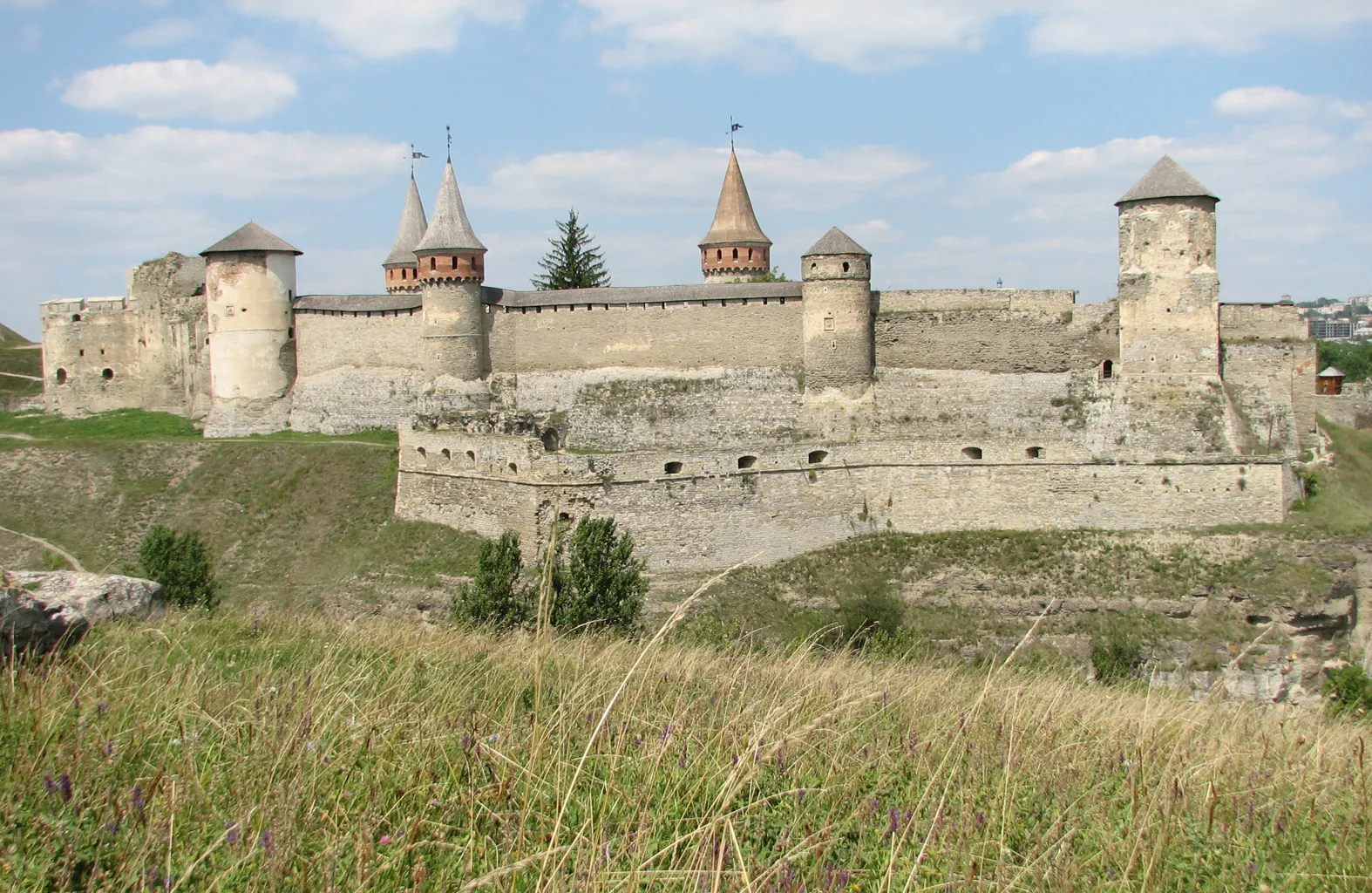
A Rich Historical Background
Early Foundations
While historical accounts date the castle to the early 14th century, archaeological evidence suggests human activity in the area as far back as the 12th or 13th centuries. The initial purpose of the castle was to protect the bridge connecting the city with the mainland. This strategic location, atop a peninsula carved out by the Smotrych River, provided a natural defense system for the Old Town neighborhood of Kamianets-Podilskyi.
Strategic Importance and Architectural Evolution
Kamianets-Podilskyi Castle’s location at a major transport crossroads in Podolia made it a prime target for invaders. Over centuries, various foreign powers rebuilt and modified the castle to suit their needs, resulting in a unique blend of architectural styles. The complex includes the Old Town fortified by King Casimir IV, the Old Castle rebuilt by Kings Sigismund I and Stephen Báthory, and the New Castle founded by Kings Sigismund III and Władysław IV.
Despite numerous changes, the castle retains a coherent architectural design, making it one of the few well-preserved medieval structures in Ukraine. The castle and the Old Town neighborhood are part of the National Historical-Architectural Reserve “Kamianets” and the National Environmental Park “Podilski Tovtry.” In 1989, Ukrainian representatives nominated the complex as a UNESCO World Heritage Site, and it is also one of the Seven Wonders of Ukraine.
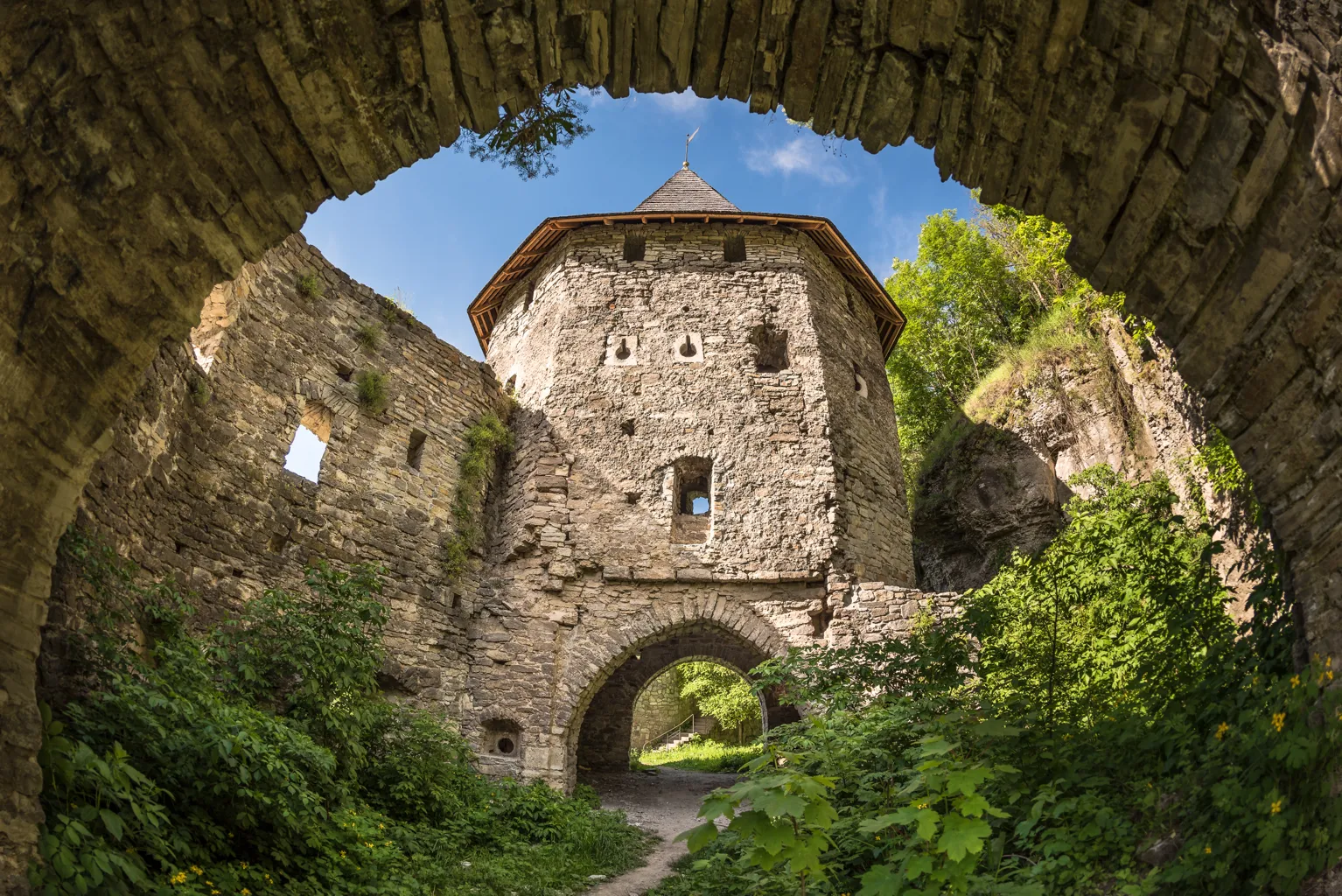
Defensive Stronghold and Invasions
The Lithuanian and Polish Eras
Initially founded during the control of the Grand Duchy of Lithuania, the castle played a significant role in defending against various invaders. The voivode of Kraków, Spytek of Melsztyn, began modernizing the castle at the turn of the 15th century, adding new towers and renovating old ones. Military engineer Hiob Bretfus further fortified the castle in the 16th century, adding the New Western and Eastern Towers, an eastern wall, and an underground gallery.
Ottoman and Tatar Attacks
From the mid-14th to mid-15th centuries, the castle faced numerous attacks from Tatar hordes and Ottoman forces. It played a crucial role during the Khmelnytsky Uprising (1648-1654), where Zaporozhian Cossacks, allied with Crimean Tatars, repeatedly attacked the fortress. Despite these constant threats, the castle managed to repel many invasions, including significant Ottoman sieges in the 17th century.
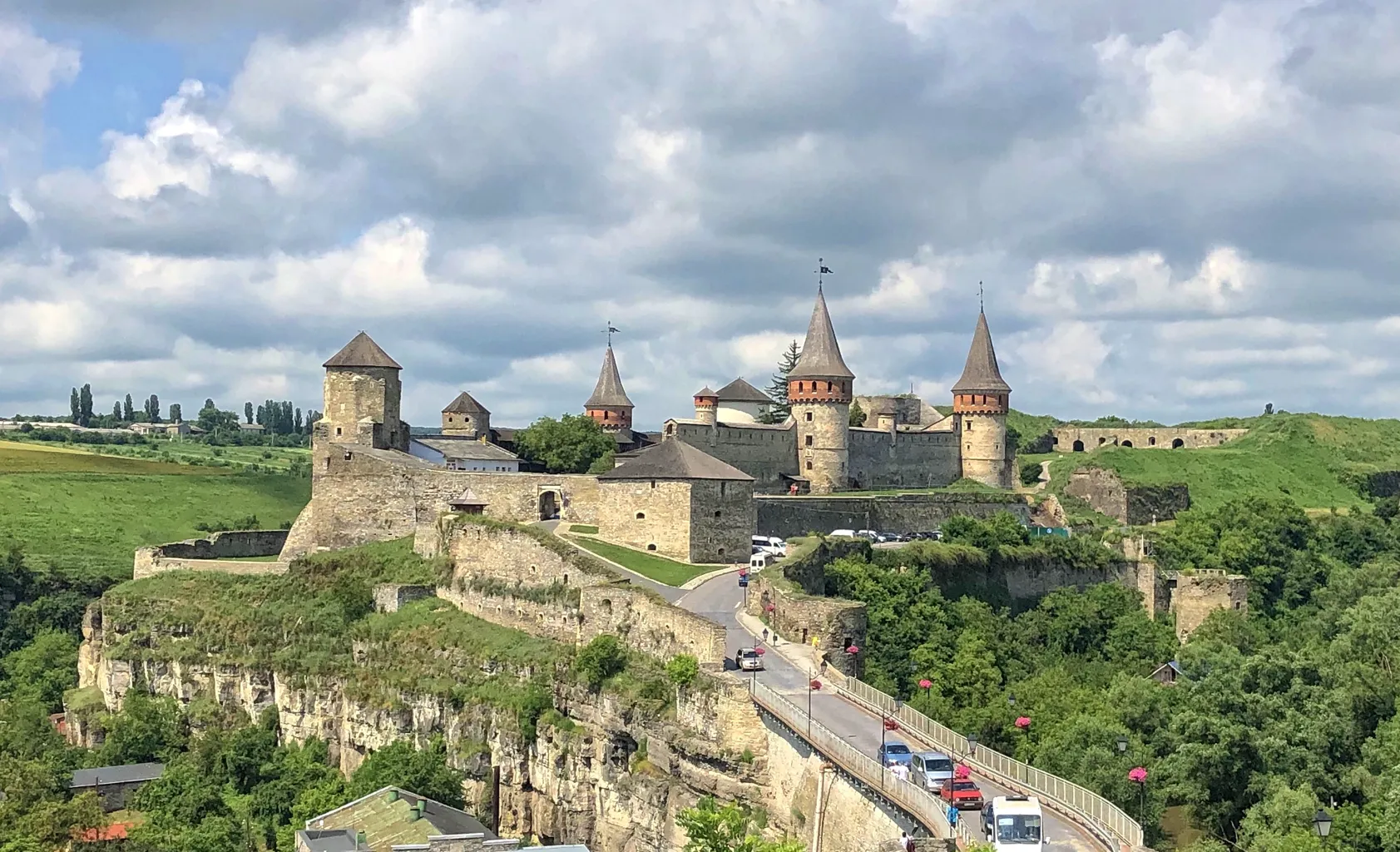
Transition to a Military Prison
By the 18th century, Kamianets-Podilskyi Castle had lost its defensive role and transitioned into a military prison. Notable prisoners included Cossack officers, haidamakas, and even the three-year-old pretender to the Polish throne, Stanisław August Poniatowski. The castle remained one of the strongest fortresses in Poland until the Second Partition in 1793, when it came under Russian control.
Modern Era and Restoration
Soviet Era to Present
After the 1905 revolution, the castle saw political use, housing various organizations and parties. In 1928, the Ukrainian Soviet Socialist Republic declared the castle a historical-cultural preserve. Restoration work began in the late 1930s, and the castle became a museum, drawing thousands of visitors annually.
Architectural Features
The castle’s architecture reflects its long and varied history. It rests on a limestone formation surrounded by the Smotrych River canyon. The complex consists of two main parts: the Old Castle and the New Castle, each built during different periods. The castle boasts twelve towers, including the Pope’s Tower, Kovpak Tower, and Tenchynska Tower, each with unique features and historical significance.
Castle Bridge
A notable feature of the castle is its bridge, which serves as the only transport link to the Old Town. Known as the “Turkish bridge” due to its reconstruction by the Turks in 1687, it remains a remarkable feat of medieval engineering.
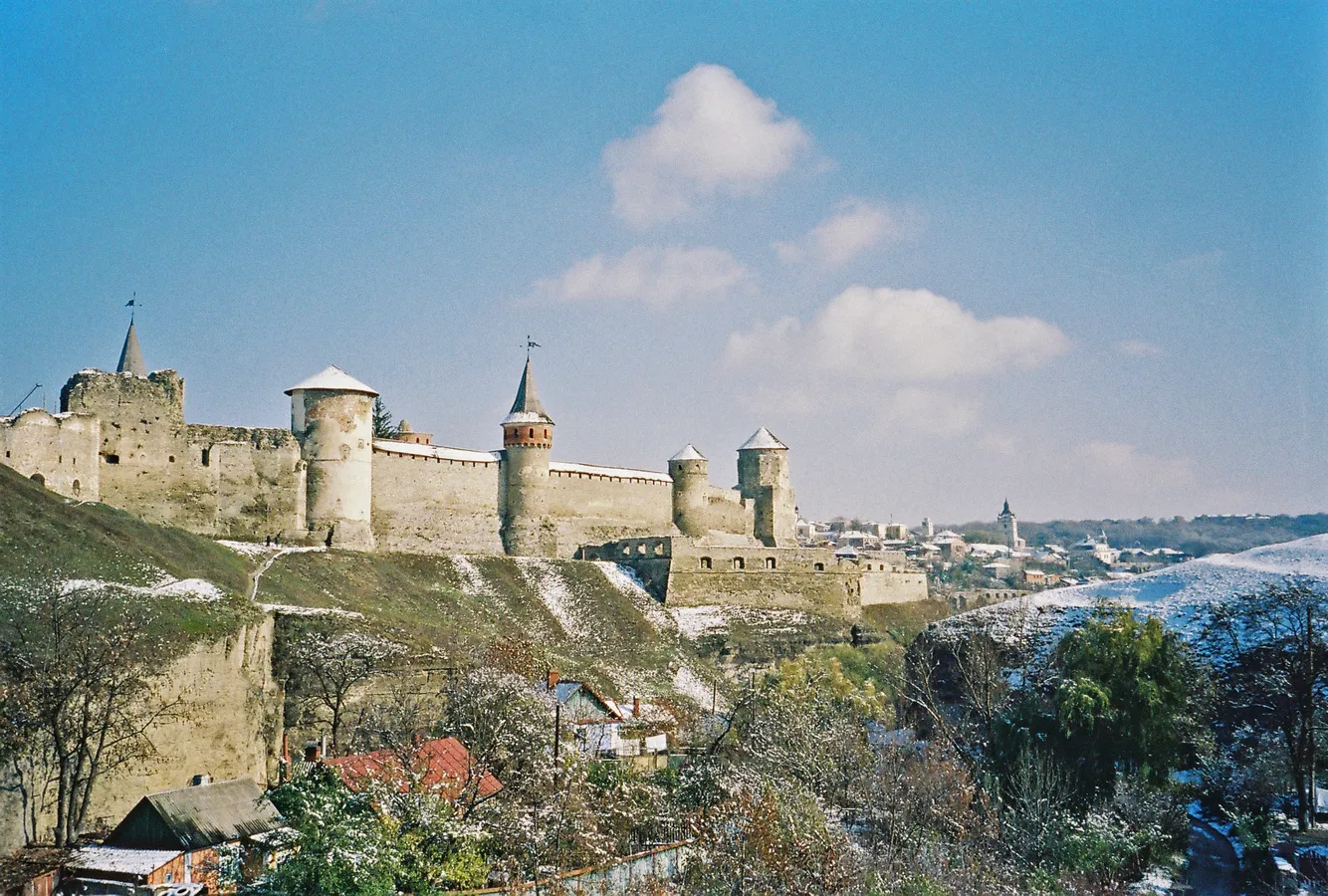
Legacy and Cultural Significance
Kamianets-Podilskyi Castle is the city’s most recognized landmark, attracting tourists from around the world. Its storied past has inspired numerous legends and literary works, including Henryk Sienkiewicz’s novel “Fire in the Steppe.” The castle has appeared on commemorative coins and stamps, highlighting its cultural and historical importance.
Today, Kamianets-Podilskyi Castle stands not only as a symbol of Ukraine’s rich history but also as a testament to the resilience and enduring spirit of its people. Its walls echo the tales of centuries, making it a must-visit destination for history enthusiasts and travelers alike.
Sources:

